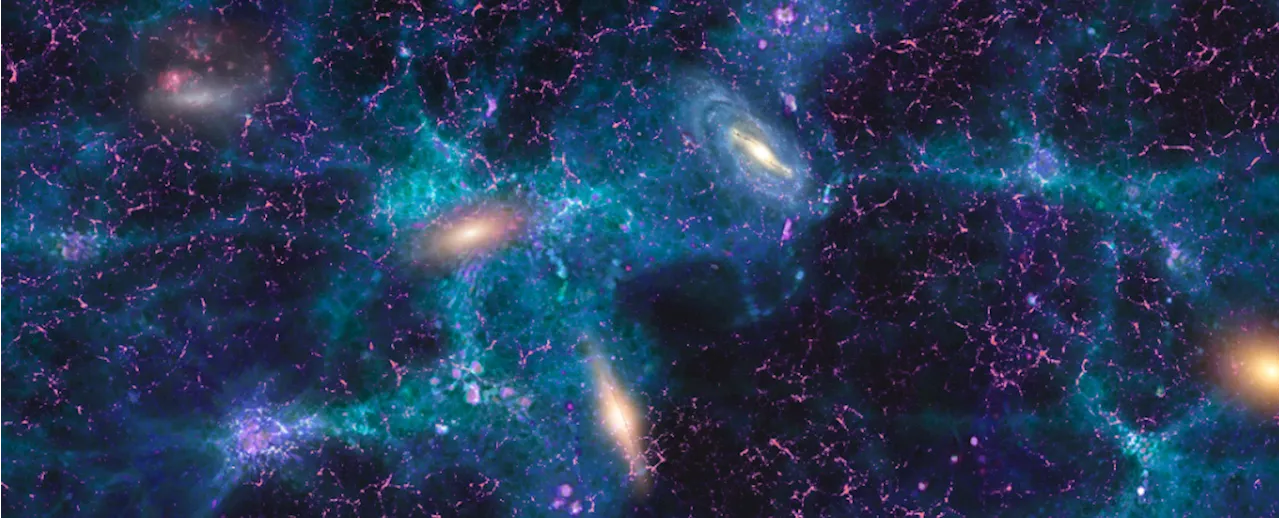Scientists introduced atomic defects in spinel using cerium, and voilà! The gemstone became a solid qubit system.
You may have heard of diamond qubits, but diamonds aren’t the only gemstones that can be used to store quantum information. A new study reveals that spinel, a vibrant and rare gem, can also be used as a qubit system.Spinels are a transparent gems that come in red, blue, black, lavender, white, yellow, and other colors. They are considered rarer than diamonds but when it comes to price, these gems generally more affordable.
They found that Ce in spinel emits over 10 times more light than in MgO, making it easier to detect. They also observed that the light emission from Ce centers in spinel changes slightly when exposed to a magnetic field even at very low temperatures , suggesting these centers can function as qubits and their spin can be controlled using a magnetic field.
Physics Quantum Physics Qubit Spinel
United States Latest News, United States Headlines
Similar News:You can also read news stories similar to this one that we have collected from other news sources.
 Tianjin University Invites Overseas Young Scientists for 2025 Excellent Young Scientists Fund ProgramThe National Natural Science Foundation of China (NSFC) Excellent Young Scientist Fund (Overseas) program, hosted by Tianjin University, seeks to attract outstanding young scholars from overseas to contribute to China's scientific and technological advancement.
Tianjin University Invites Overseas Young Scientists for 2025 Excellent Young Scientists Fund ProgramThe National Natural Science Foundation of China (NSFC) Excellent Young Scientist Fund (Overseas) program, hosted by Tianjin University, seeks to attract outstanding young scholars from overseas to contribute to China's scientific and technological advancement.
Read more »
 Scientists Confirm Accelerating Expansion of Space Beyond Current Physical ExplanationsScientists have conducted precise measurements of a galaxy cluster 300 million light-years away, revealing that the space around us is expanding faster than physics can currently explain. This finding challenges our understanding of the cosmos and prompts further investigation into the nature of dark energy and the fundamental laws of the universe.
Scientists Confirm Accelerating Expansion of Space Beyond Current Physical ExplanationsScientists have conducted precise measurements of a galaxy cluster 300 million light-years away, revealing that the space around us is expanding faster than physics can currently explain. This finding challenges our understanding of the cosmos and prompts further investigation into the nature of dark energy and the fundamental laws of the universe.
Read more »
 Giant Pterosaur Skeleton Reanalyzed, Scientists Conclude It Was Not a Distinct SpeciesA study of a large pterosaur fossil, previously considered a separate species, reveals it was likely a giant individual of a known species. Scientists analyzed the unique features of the fossil, concluding that its differences are consistent with growth and size variations within the species.
Giant Pterosaur Skeleton Reanalyzed, Scientists Conclude It Was Not a Distinct SpeciesA study of a large pterosaur fossil, previously considered a separate species, reveals it was likely a giant individual of a known species. Scientists analyzed the unique features of the fossil, concluding that its differences are consistent with growth and size variations within the species.
Read more »
 Japanese Scientists Create First-Ever Long-Term Dataset of Earth's Entire AtmosphereJapanese researchers have developed a comprehensive dataset of Earth's entire atmosphere, reaching up to space, providing unprecedented insights into the mysterious mesosphere.
Japanese Scientists Create First-Ever Long-Term Dataset of Earth's Entire AtmosphereJapanese researchers have developed a comprehensive dataset of Earth's entire atmosphere, reaching up to space, providing unprecedented insights into the mysterious mesosphere.
Read more »
 Scientists Identify Neurons in Mice That Can Induce Hibernation-Like StateResearchers have discovered neurons in mice that, when activated, can alter the body's metabolic rate and induce a state similar to hibernation. This groundbreaking finding was achieved by stimulating the hypothalamus preoptic area in the brain using ultrasound.
Scientists Identify Neurons in Mice That Can Induce Hibernation-Like StateResearchers have discovered neurons in mice that, when activated, can alter the body's metabolic rate and induce a state similar to hibernation. This groundbreaking finding was achieved by stimulating the hypothalamus preoptic area in the brain using ultrasound.
Read more »
 Scientists Unlock Secrets of Halide Perovskites, Paving the Way for Energy-Efficient OptoelectronicsUniversity of Missouri scientists are exploring the potential of halide perovskites, a material with exceptional ability to convert sunlight into energy. This discovery could lead to more affordable and efficient solar panels, as well as brighter, longer-lasting LED lights that consume less energy.
Scientists Unlock Secrets of Halide Perovskites, Paving the Way for Energy-Efficient OptoelectronicsUniversity of Missouri scientists are exploring the potential of halide perovskites, a material with exceptional ability to convert sunlight into energy. This discovery could lead to more affordable and efficient solar panels, as well as brighter, longer-lasting LED lights that consume less energy.
Read more »
